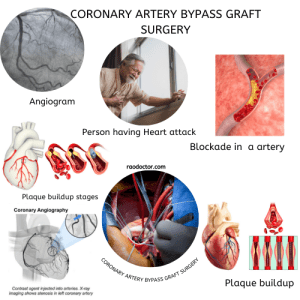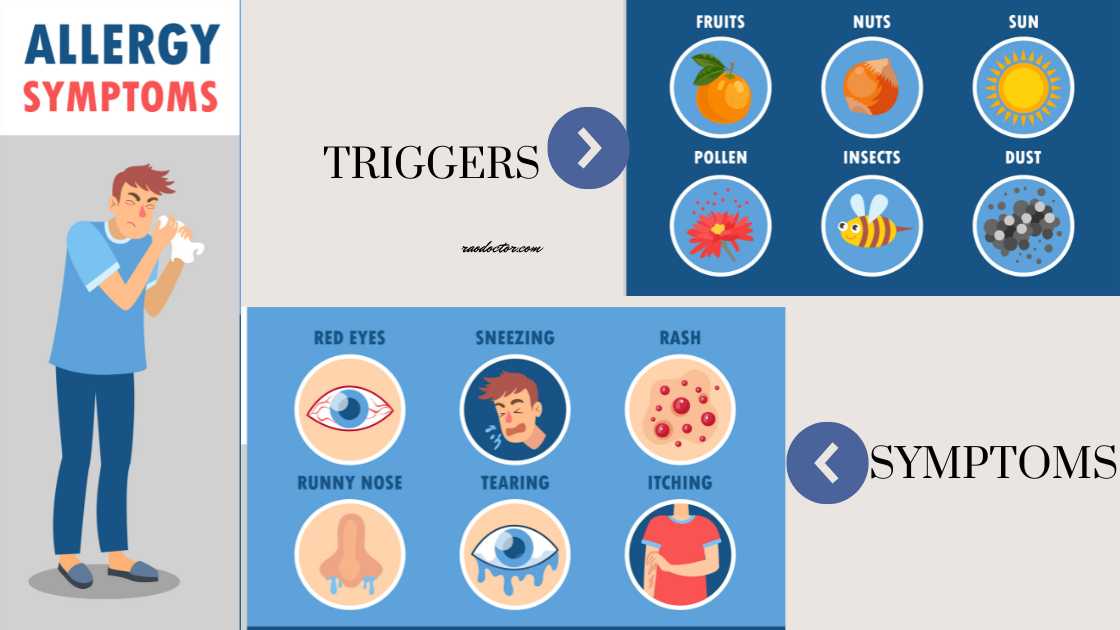Are you feeling constantly fatigued and weak? Do you feel tired while doing some work, even as easy as reading? It could be a sign of anemia, an ailment that can leave you distressed that you are not able to carry out easy chores without getting tired doing it.

As this topic is quite exhaustive, I have split it into 2 parts-in the first part we discuss the various types of anemia and in the next part we discuss how to manage these anemias.
Dr. K. P. V. Rao’s Health Blogs
Table of Contents
So, what exactly is Anemia?
Anemia is a common blood disorder that affects millions of people worldwide. It is characterized by a decrease in hemoglobin as in iron-deficiency anemia, where the RBCs are small in size, or the RBCs may be large, yet hemoglobin content less, as in Vitamin B12 deficiency anemia.
Understanding the different types of anemia and how to effectively manage them is crucial for maintaining good health.
Have a look at the reports of one of my patients-

How do you know if you have anemia?
In this image above, you can see that both hemoglobin [Hb] and RBC count are low. This signifies that the person is suffering from anemia. You can also see that platelet count is also reduced- this patient had malaria, where both Hb and RBCs are down.
Anemia can be diagnosed by having a look at a simple blood test called complete blood count or CBC. In one of my articles about blood investigations, I wrote on how to read your blood count report. You can read it here if you have not already done so:
In this comprehensive guide, we will delve into the various types of anemia, including iron-deficiency anemia, vitamin B12 deficiency anemia, Folic acid deficiency anemia and sickle cell anemia, among others.
We will explore the causes, symptoms, and complications of each type, empowering you with the knowledge to recognize and address them.
Moreover, we will learn all the effective ways to manage this disorder, including dietary changes, supplements, and lifestyle modifications.
From incorporating iron-rich foods into your meals to adopting healthy habits, you will learn practical strategies to boost your red blood cell production and mitigate the symptoms of anemia.
Don’t let this disorder drain your energy and affect your quality of life. By understanding the different types and implementing effective management techniques, you can regain strength and vitality. Join me in this enlightening journey to better understand anemia and take control of your health.
Types of Anemia
Before we carry on, let’s learn a bit about the red cell structure and its function, so that we can understand anemia better. Read here about it-
Red Blood cells (Doc) by K P Vasudeva RaoAnemia can be classified into several types, each with its own distinct causes and symptoms. Understanding these types is essential for accurate diagnosis and effective management. Let’s explore the most common types of anemia:
Iron-deficiency Anemia
Iron-deficiency anemia is the most prevalent type of anemia worldwide. It occurs when the body lacks sufficient iron to produce an adequate amount of healthy red blood cells. This can be caused by a variety of factors, including
- inadequate dietary intake of iron,
- blood loss from chronic conditions like heavy menstrual bleeding
- gastrointestinal bleeding, or an inability to absorb iron properly
- worm infestation that sucks blood from our intestines (this is particularly common in children)
The symptoms of iron-deficiency anemia can vary from mild to severe and may include
- fatigue,
- weakness,
- pale skin,
- shortness of breath,
- dizziness, and an irregular heartbeat.
If left untreated, it can lead to complications such as heart problems and impaired cognitive function.
Suggested reading- Iron Deficiency Anemia
Vitamin B12 Deficiency Anemia
Vitamin B12 deficiency anemia occurs when there is a lack of vitamin B12 in the body, which is essential for the production of healthy red blood cells. This type of anemia is commonly caused by a deficiency in intrinsic factor, a protein necessary for the absorption of vitamin B12 in the digestive system.
It can also be caused by poor dietary intake of vitamin B12, certain gastrointestinal conditions that interfere with absorption, or pernicious anemia, an autoimmune condition that affects the production of intrinsic factor.
The symptoms of vitamin B12 deficiency anemia often develops gradually and can include fatigue, weakness, pale skin, shortness of breath, dizziness, tingling or numbness in the hands and feet, and difficulty walking. If left untreated, it can lead to neurological damage and an increased risk of heart disease.
Learn here more about Vitamin B12 deficieny anemia.
Folic Acid Deficiency Anemia
Folic acid deficiency anemia occurs when there is an insufficient amount of folic acid, a B vitamin, in the body. Folic acid is essential for the production of red blood cells and DNA synthesis. This type of anemia can be caused by inadequate dietary intake of folic acid, poor absorption due to certain medical conditions, excessive alcohol consumption, or certain medications that interfere with folic acid metabolism.
The symptoms of folic acid deficiency anemia are similar to other types of anemia and may include fatigue, weakness, pale skin, shortness of breath, and a decreased ability to fight infections.
Pregnant women with folic acid deficiency anemia may also be at an increased risk of complications such as neural tube defects in the developing fetus.
Dr. K. P. V. Rao’s Health Blogs
Hemolytic Anemia
Hemolytic anemia is a type of anemia that occurs when red blood cells are destroyed or removed from the bloodstream prematurely. This can be caused by various factors, including:
- inherited conditions,
- autoimmune disorders,
- infections,
- certain medications, or
- exposure to toxins.
The symptoms of hemolytic anemia can vary depending on the underlying cause but may include-
- fatigue,
- jaundice (yellowing of the skin and eyes),
- pale skin,
- dark urine, and
- an enlarged spleen.
In severe cases, it can lead to complications such as gallstones and heart problems.
Sickle Cell Anemia
Sickle cell anemia is a severe hereditary form of anemia in which a mutated form of hemoglobin distorts the red blood cells into a crescent shape at low oxygen levels. This leads to less oxygen being delivered to the body’s tissues, resulting in severe pain and other complications.
Sickle cell anemia is an inherited form of anemia characterized by abnormally shaped red blood cells that resemble a crescent or sickle. These misshapen cells can get stuck in blood vessels, impeding blood flow and causing pain, organ damage, and a decreased lifespan of red blood cells.
The symptoms of sickle cell anemia can range from mild to severe and may include fatigue, pain episodes known as sickle cell crises, infections, delayed growth in children, and vision problems. Individuals with sickle cell anemia require lifelong monitoring and management to prevent complications.
Anemia of inflammation and chronic disease:
Certain diseases — such as cancer, HIV/AIDS, rheumatoid arthritis, kidney disease, Crohn’s disease and other chronic inflammatory diseases — can interfere with the production of red blood cells, leading to chronic anemia.
This type of anemia occurs when the body produces too many inflammatory cytokines, which interfere with the production of red blood cells. This is found mostly in cases of chronic diseases like kidney failure, hepatitis, HIV, chronic bronchial asthma, etc.
Aplastic anemia:
This is a rare type of anemia that occurs when the bone marrow does not produce enough red blood cells.
Aplastic anemia is a rare, life-threatening anemia that occurs when your body doesn’t produce enough red blood cells. Causes include infections, certain medicines, autoimmune diseases and exposure to toxic chemicals.
The symptoms of aplastic anemia can vary depending on the severity of the condition, but some common ones include fatigue, weakness, shortness of breath, paleness, and frequent infections. Aplastic anemia can be diagnosed through blood tests that measure the number of red blood cells, white blood cells, and platelets in the blood.
Conclusion
Anemia is a common blood disorder that can significantly impact daily life and overall well-being. Understanding the different types of anemia and implementing effective management strategies is crucial for maintaining good health and minimizing the impact of symptoms.
By recognizing the signs and symptoms of various types of anemia, you can seek appropriate medical advice and interventions. Additionally, incorporating dietary changes, ensuring sufficient intake of essential nutrients, and following medical treatments can greatly improve your red blood cell production, alleviate symptoms, and enhance your quality of life.
Don’t let anemia drain your energy and affect your quality of life. With knowledge, proactive management, and support from healthcare professionals, you can regain strength and vitality.
Take control of your health, embrace a balanced diet, and explore the available treatment options. Together, we can conquer anemia and live life to the fullest. In my next article, we will learn how to manage all types of anemia in detail.
Suggested reading:
Final words
I hope you have understood what anemia is and what it’s types, signs and symptoms. My next article is a continuation of this series on this condition where we will learn in detail how to manage all different types. Do share this article using the social icons at the bottom of this article. You can also Click to Tweet here-
Understanding Anemia: Part-1 All You Need to Know about Types… Share on XAdios.




